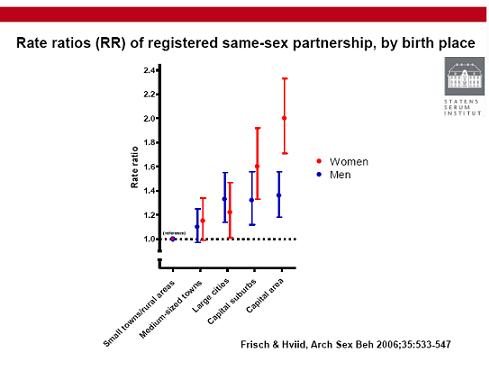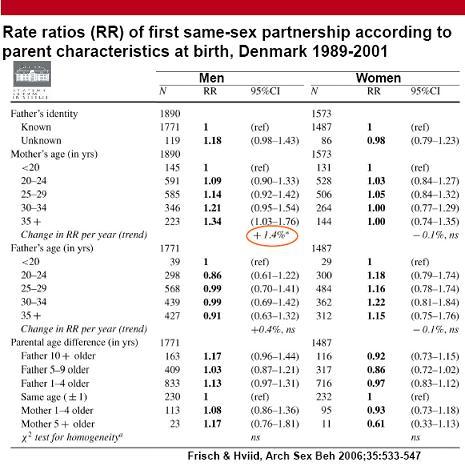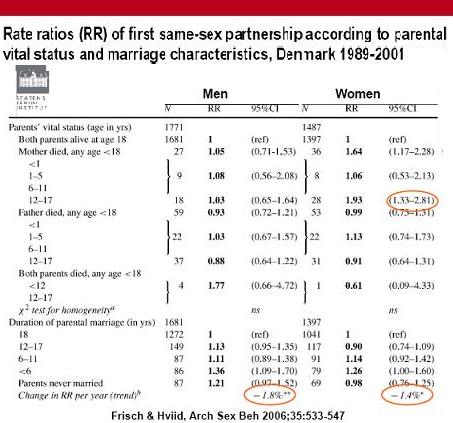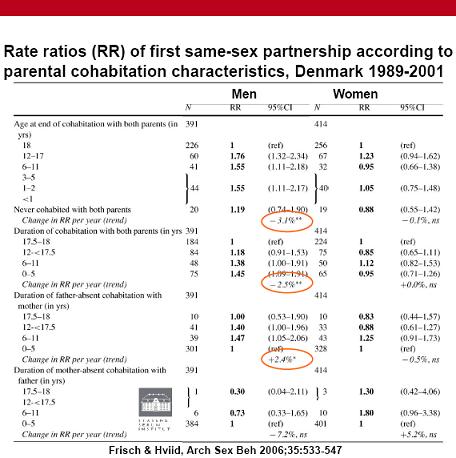I have posted quite a few times on reparative drive theory and related matters. A reader suggested that it would be good to bring it all together on a page, and I agree. Hence, the “reparative therapy information” page is linked here and on the right side of the blog. I will add to it as I get time.
If anyone finds a post I should include, let me know. The format is a little rough right now, but I will work on that.
Tag: Joseph Nicolosi
Masculinity and same-sex attraction
I was talking to an acquaintance who attended a Journey into Manhood weekend. He was disappointed that his attractions to the same sex did not evaporate after the weekend. To be sure, he felt a greater sense of masculinity and much less self-conscious. During the first week or two after the weekend, he seemed to notice women more and did not feel the usual tug to look at gay porn. However, after awhile he noticed something unexpected. At what he felt was the height of his feelings of security about his manhood, he again experienced same-sex attractions. At that point, he began to feel an assault on his sense of manhood. In other words, instead of the sense of diminished masculinity leading to same-sex attraction, it was the other way around. His awareness of same-sex attraction came first and then his reduced sense of himself as a male.
I have noticed this before in the stories of men who describe SSA. The awareness of same-sex attraction in their early years (elementary school, junior high) came prior to struggles over masculinity. I guess once this association is made, one could trigger the other. I wonder if this kind of association is what makes the masculinity enhancing weekends so attractive to reparative therapists.
I see no or little benefit from them on either front although some men, straight and gay, believe they have been helpful. The New Warriors Training Adventure, recommended to SSA men by Richard Cohen and Joseph Nicolosi, rarely alters SSA even though many gay males say that they feel much better about themselves as men after involvement in them.
Frisch & Hviid and reparative drive theory revisited
Commenter Evan recently posted a link to a informative powerpoint produced by colleague Morten Frisch regarding his study of social and family factors associated with homosexual and heterosexual marriage in Denmark. Morten is no stranger to this blog as he commented at length regarding the Cameron’s biased attempt to estimate homosexual lifespans. I reviewed this study for a Washington Times article (the WT link is disabled but it is here)and believe it is a significant contribution to the literature regarding causal factors associated with sexual orientation.
I would like to look at the significant findings in Frisch’s study in relationship to predictions made by reparative drive theory. According to the powerpoint, the purpose for the study was
To use a unique national set of demographic data free of selection bias to
-identify possible childhood family correlates of adult sexual orientation and partner choices
-evaluate the fraternal birth order (FBO) hypothesis (Blanchard) for male homosexuality
Regarding the latter purpose, the study found no evidence to support the FBO. What I want to do now is reproduce a few of the slides in light of predictions from reparative theory. Reparative theory proposes that disruption in the same-sex parent relationship in the crucial years of gender identity formation is responsible for homosexuality as a “gender identity problem” (Joe Nicolosi used to call homosexuality a gender identity disorder). His newer iteration of the theory refers to male homosexual “enactment” as deriving from feeling cut off from authentic masculinity. This deficit is located in a failure of the boy to successfully disidentify with mother and identify and bond with father between 18 and 36 months of age. Rejection from male peers builds on the bonding failure resulting in an eventual experience of same-sex attractions in a false and futile effort to return to masculinity. He has less to say about female homosexuality and most reparative therapists say that just about anything can lead to lesbianism as long as it is traumatic in some way or a deficit of upbringing.
Based on these premises, we would expect research on large groups of homosexuals to show an increase in problems during those crucial periods of early childhood. Further, we would expect the differences between groups to be large since reparative therapists say that the environmental experiences are necessary causes of same-sex attraction. With this in mind, let’s look at the Frisch results.
Birth place and marriage

On all of these tables, one (1) is the baseline and deviation from one is considered to be an increase or decrease in likelihood of homosexual partnership. In this case, the likelihood of same-sex partner choice goes up with the urbanicity of birth place. It is hard to know what this means. One might suppose that attitudes toward same-sex marriage are more liberal in the urban area if one assumes people are married where they are born. In a smaller country like Denmark, it seems that gay people in the rural areas might just move to the city where attitudes are more accepting. Perhaps, the social attitudes in the area where one grows up plays a role as well.
Parental characteristics

First note that none of the variables here are significant for women and only one is for men – mother’s age. There is a slight increase in odds of homosexual marriage for men if one’s mother was over 35 at birth. I do not see any clear theoretical connection for this finding. However, apropos to this post, note that awareness of the identity of one’s father has no significant impact on marital direction. A reparative paradigm would expect disruptions or ambiguity of paternal identification to lead to an increase in homosexual partnering.
Parental vital status and marriage characteristics

Reparative theory would predict disruptions in the same-sex parent bond in early childhood. As indicated by parental death, Frisch does not find the predicted disruptions. First of all, such circumstances for men or women are infrequent (only 22 cases each of paternal death before age 11) and second, there is no relationship to partnering in males. In females, the relationship to partnering is not in the early childhood years but during adolescence. As with all of these differences, the effect size is quite small so the variable does not account for much variation between gay and straight partnering.
Regarding parental marriages, I am a bit unclear how this finding relates to reparative drive theory. I initially wrote that there is a very small effect of short parental marriages for both men and women. However, I asked Morten to read this summary prior to publication and he took some exception to this point. He wrote,
Actually, there is a 36% higher likelihood of same-sex marriage among boys whose parents’ marriage lasted less than 6 years compared with boys whose parents’ marriage remained intact until age 18 years, and the corresponding estimate was 26% higher same-sex marriage rates among girls whose parents’ marriage lasted less than 6 years compared with girls whose parents’ marriage remained intact until age 18 years. Our data on duration of parental marriage duration and, for boys, duration of father-absent cohabitation with mother obviously don’t prove anything in relation to the reparative theory, but they are not in conflict with it.
On the other hand, effect sizes calculated in the way I am used to seeing finds a trivial amount of variance.
The only marriage duration that related to homosexual marriage was the “less than 6 years” category.” It would be tempting to see this as meaning that the children were all under 6. However, in Denmark, it is not uncommon for couples to cohabitate, have a child and then get married. In other words, we cannot assume the ages of the children involved based on duration of marriage.
In any event, this finding, even if of some substance, would neither confirm nor disconfirm the specifics of reparative drive theory – especially in light of the data which do not find a push toward homosexual partnering among males who experienced father absence due to death or unknown identity.
Parental cohabitation

This slide depicts data which seems more promising for a reparative theorist in that father absent cohabitation shows a slight relationship to partnering for males. However, if I was a reparative drive theorist, I would be disappointed. First, the number of gay males who experienced this factor is relatively small (80 of father absent cohabitation of between 6-17.5 years). Most partnered gays did not experience this event. Second, the effect is very small. If same-sex parent disruption was a necessary condition, might expect more dramatic results with application to both sexes.
I find myself in the unusual position of qualifying Morten’s conclusions. I think there is a need to qualify the factors by the non-significant results found. For instance, Morten lists father absence as a factor related to gay marriage. However, I would note that paternal absence via death was unrelated to outcome as was lack of knowledge of father’s identity.
On balance, I do not think Frisch and Hviid’s massive study of marriage choice provides significant support for reparative drive theory. If anything, the predicted findings are mixed.
If parental bonding and was massively and necessarily related to homosexual outcomes, it seems that some large study would find greater differences on the relevant dimensions. However, neither the recent Francis study nor the Wilson and Widom study of abuse and neglect demonstrate the expected results. While Frisch and Hviid report some impact of marital disruption, it is unclear what is the potent element of those events.
Research note: Gay and straight men assess parental qualities
I am re-examining (in some cases examining for the first time) older studies of parenting and adult sexual orientation. This post will look at a paper from 1983 – Sipova, I., & Brzek, A. (1983). Parental and Interpersonal Relationships of Transexual and Masculine and Feminine Homosexual Men. Journal of Homosexuality, 9, 75-85.
This Czechoslovakian study claims to find differences between assessments of parents by gay, straight and MtF transsexuals. However, the actual data do not support the discussion from the authors who clearly wanted to find the traditional triad. A look at the data reveals few statistical differences. The authors reported absolute values in the direction they expected but analysis finds only a few differences and those were not supportive of their discussion.
This study is interesting in that the authors divided the homosexual group (from a clinical population) into effeminate and non-effeminate males. Self-assessments of dominance differed with gay males viewing themselves as less dominant than straight males. However, assessments of paternal dominance were not different by sexual orientation of respondent. In other words, these men did not differ in how assertive and strong they perceived their fathers to be. Relevant to the reparative drive model, the non-effeminate group of gay males did not differ from the straight group on how loving they perceived their fathers as being. However, the effeminate gay male group did differ from the straight males and non-effeminate gay males on perception of paternal love. This finding supports the idea that gender nonconformity may evoke paternal rejection rather than paternal rejection being causally related in a comprehensive way to homosexual attraction.
Now here is an interesting finding: Non-effeminate gay males differed from both the effeminate gay males and the straight males on assessments of maternal love. Straight and effeminate gay males were no different on this dimension — both saw their mothers as quite loving while the non-effeminate gay males saw them as loving but significantly less so than the other two groups. All groups saw mothers as equally dominant and all saw their mothers as less dominant than the fathers. While some differences associated with the groups, the study does not support the “classic triadic model” of a distant/hostile father and overbearing/protective mother associated with male homosexuality. It is striking how similar the assessments were.
More on the Dr. Phil Show Little Boy Lost – Sparks fly among guests
This clip features some give and take between panelists on the Dr. Phil Show episode on gender identity issues. In this segment, Dr. Siegel defends moms by saying there is no evidence that being too close to a boy will make him want to be a girl. Dr. Nicolosi says Siegel is oversimplifying his reparative theory. What do you think?
Lights, camera, action!